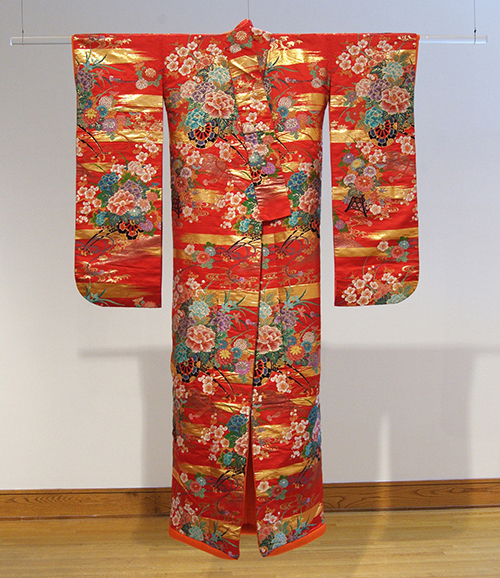Japanese kimonos are not only garments—they’re works of art. If you'd like to display one, proper mounting helps preserve its condition while showcasing its beauty.
1. Choose the Right Kimono to Display
Lightweight kimonos are easier to mount.
Avoid hanging fragile or heavily embroidered silk garments for long periods—they may sag under their own weight.
2. Use a Kimono Display Rod (Ikou or Tansu Bar)
Traditional mounting uses a horizontal rod that passes through the sleeves and body, distributing weight evenly.
Recommended: lacquered wooden or black metal rods, at least 3–4 cm (1.25–1.5 in) indiameter for support.
Make sure the rod extends 10–20 cm (4–8 in) beyond each sleeve edge for visual balance.
3. How to Mount
Fold the kimono in half vertically along the center seam (uchi-suji) and insert the rod through the sleeves and body.
Adjust the garment so it hangs evenly and naturally—not stretched tightly
You may use small discreet tacking stitches or invisible thread loops inside the collar or sleeves to stabilize.
4. Wall Mounting
Use two secure wall brackets that support the rod at both ends.
Ensure the rod is level and strong enough to hold the textile’s weight without bending.
Do not hang near heaters, fireplaces, windows, or humid areas.
5. Protect from Light
Avoid direct sunlight—UV rays can rapidly fade silk and damage dyes.
Use UV-filtering glass or film on nearby windows, or mount in rooms with controlled lighting.
6. Consider Rotation
To prevent long-term stress or fading, rotate textiles every 6 to 12 months.
Store the kimono flat or rolled in acid-free materials when not on display.
Optional: Framed Mounting
For more delicate or valuable textiles, consult a textile conservator for flat mounting within a shadow box or framed glass display using archival methods.
.avif)








